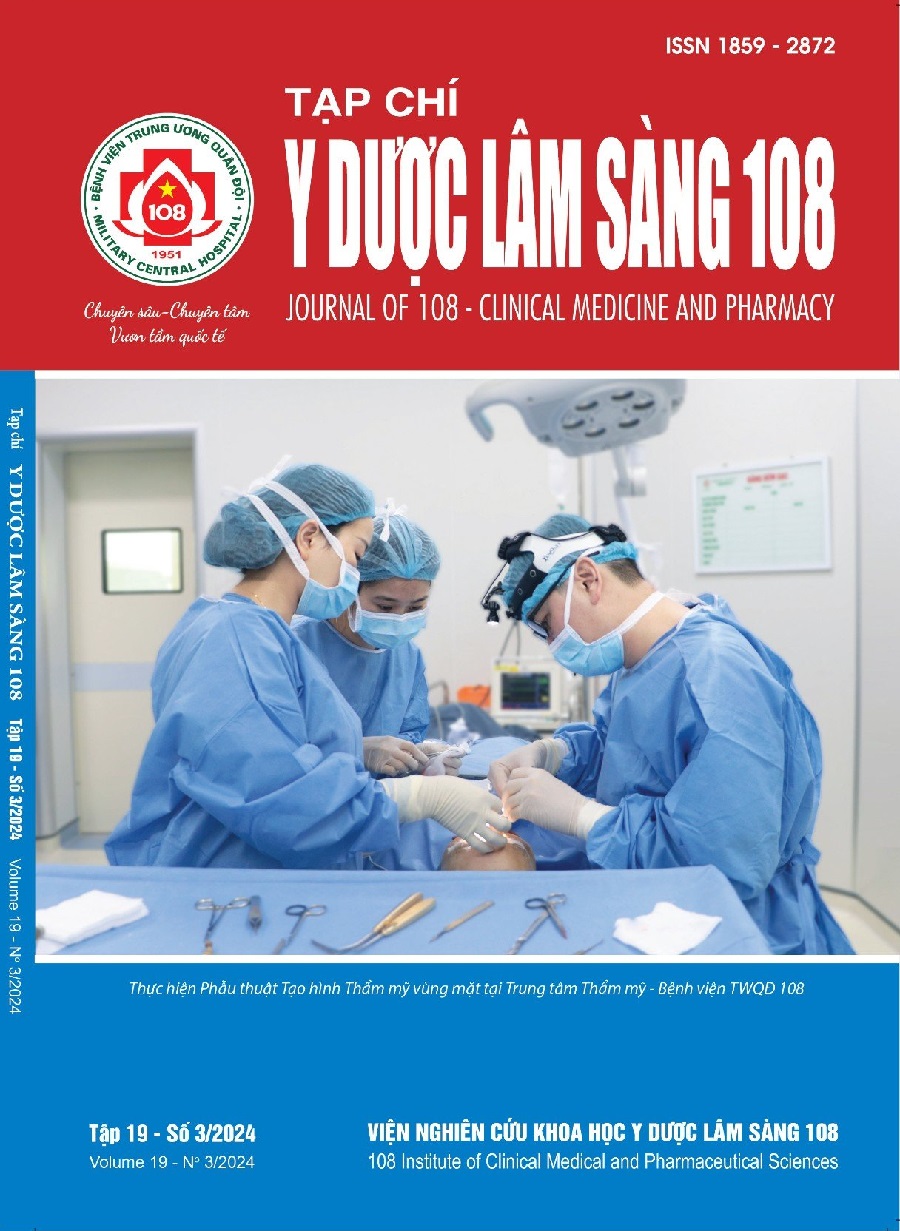The correlation between HBcrAg levels and HBV DNA viral load in patients with chronic hepatitis and cirrhosis caused by HBV infection
Main Article Content
Keywords
Abstract
Background: Vietnam is located in an area with a high prevalence of hepatitis B virus infection. Treatment of chronic hepatitis B (CHB) is still difficult due to the prolonged existence of cccDNA in the liver, recurrence after withdrawal of NA treatment even though HBV DNA levels are undetectable. Hepatitis B core-related antigen (HBcrAg) is a biomarker found in the serum of patients that has been proven effective in monitoring and predicting treatment of chronic HBV infections. HBcrAg levels were persistently detected, even when serum HBV DNA was not detected. Studies around the world show that HBcrAg has many advantages in treatment and monitoring CHB, LC. In Vietnam, there are few studies on HBcrAg. Objective: To evaluate the correlation between HBcrAg levels and HBV DNA viral load in patients with CHB and LC. Subject and method: A cross-sectional descriptive study on 172 patients diagnosed with CHB and LC, treated at the 108 Military Central Hospital. HBcrAg levels were quantified on lumipulse G 1200 system – Fujirebio (Japan). Result: HBcrAg levels correlated linearly with the HBV DNA loads in different sub-groups, however HBcrAg levels deceased slowly than HBV DNA reduction during NA treatment. Conclusion: There is a positive correlation between HBcrAg levels and HBV DNA load. HBcrAg may be a better marker than HBV DNA in monitoring antiviral therapy in patients with chronic hepatitis B.
Article Details
References
2. Mak LY, Wong DKH, Cheung KS, Seto WK, Lai CL, Yuen MF (2018) Review article: Hepatitis B core-related antigen (HBcrAg): An emerging marker for chronic hepatitis B virus infection. Aliment Pharmacol Ther 47(1): 43-54.
3. Seto WK, Wong DKH, Fung J et al (2014) Linearized hepatitis B surface antigen and hepatitis B core-related antigen in the natural history of chronic hepatitis B. Clin Microbiol Infect 20(11): 1173-1180.
4. Trịnh Thị Quế, Phan Thanh Nguyên, Triệu Thùy Anh, Vũ Anh Tuấn, Bùi Văn Thưởng và Phạm Thiện Ngọc (2022) Nghiên cứu nồng đồ HBcrAg huyết tương trong theo dõi điều trị viêm gan virus B bằng thuốc Nucleot(s)ide analogues (NAS). Tạp chí Y Học Việt Nam tập 519 (số Chuyên đề), tr. 73-80.
5. Phạm Thị Thùy và Nguyễn Thị Vân Hồng (2022) Khảo sát sự thay đổi của HBcrAg trên người bệnh viêm gan B mạn trước và sau điều trị Tenofovir Disoproxil Fumarate 300mg. Tạp chí Y học Việt Nam; tập 521 (số 1), tr. 257-261.
6. Inoue T, Tanaka Y (2019) The Role of Hepatitis B core-related antigen. Genes 10(5): 357.
7. Testoni B, Lebossé F, Scholtes C et al (2019) Serum hepatitis B core-related antigen (HBcrAg) correlates with covalently closed circular DNA transcriptional activity in chronic hepatitis B patients. J Hepatol 70(4): 615-625.
8. Akuta N, Suzuki F, Kobayashi M et al (2014) Correlation between hepatitis B virus surface antigen level and alpha-fetoprotein in patients free of hepatocellular carcinoma or severe hepatitis: HBsAg and AFP. J Med Virol 86(1): 131-138.
 ISSN: 1859 - 2872
ISSN: 1859 - 2872
